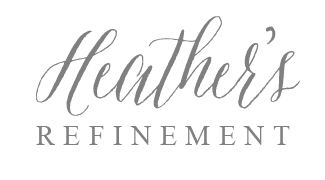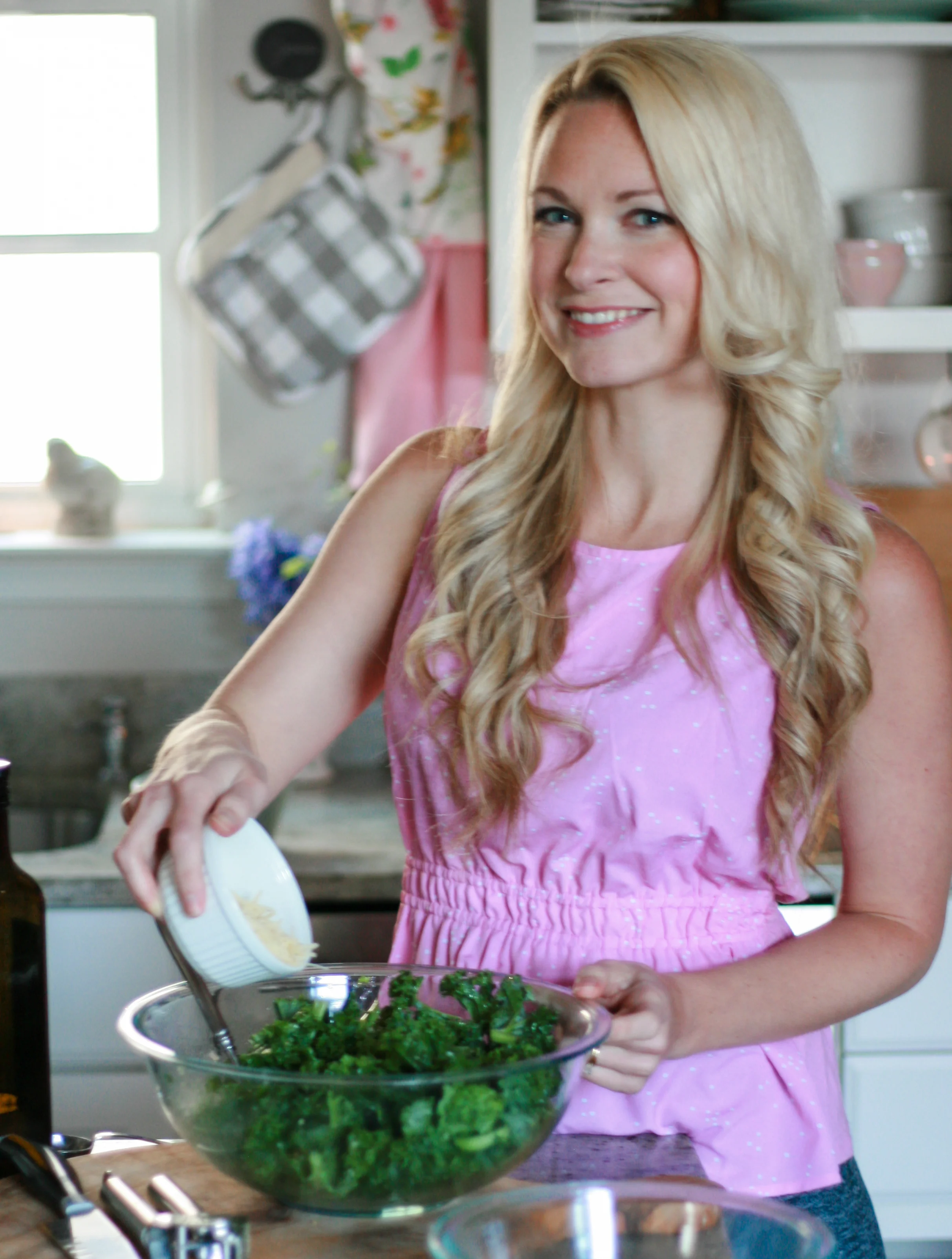Tools for a Real Food Kitchen and Perfect Grass-Fed Pot Roast Recipe
When I got married in 2005 and created a wedding registry, I had no clue what I needed for our kitchen. I knew I liked the look of copper pots because they were timeless (and received several of them — so gorgeous), and I had some intuition about non-stick and avoided it, but otherwise my list was threadbare. If I could go back and tell my newly-engaged self what to register for, it would be ALL of the things on the list below!
This list is for anyone who cooks, who desires to create healthy meals from scratch more often than not, and who wants to avoid toxic chemicals from plastics, aluminum, and non-stick surfaces.
Plastics
I have almost NO plastic anywhere in my kitchen. I got rid of plastics when I was trying to get pregnant for the first time, back in 2007. I learned then that they easily break down and leach toxins into the foods they touch. BPA and phthalates are just two of the very well known toxins from plastics that are potent endocrine (hormone) disruptors and can cause birth defects. Nothing to be messing around with when it comes to trying to form a healthy baby, or grow a healthy child! Just because other plastics are thought to be safe doesn’t mean they’ve been proven to be safe! So I avoid them ALL, but most importantly when they’re going to be in contact with hot/warm foods or acidic foods. This means no Saran wrap, no tupperware, no plastic spatulas or serving spoons, no disposable plastics, no plastic-coated paper plates, no plastic measuring cups, no plastic pitchers or bowls, no plastic sippy cups or baby plates, you get the idea!
Aluminum
Aluminum is repeatedly linked to Alzheimer’s and autism, and other neurological disorders. As with other metals, it targets brain tissue and accumulates there. It has NO biological role in the body, so it really should not be put in or on the body. I avoid aluminum cans (no sodas or even carbonated water in cans) and aluminum cookie sheets and pans, aluminum foil (especially to cook/grill with!!), and avoid aluminum wherever else I find it. Obviously, the worst offender is vaccines — the dose of aluminum that is given newborns at birth in the Hepatitis B vaccine is 20 times higher than the FDA safety allowance. But vaccines are a topic for another day!
Non-Stick Coatings
Right before I began researching non-stick chemicals in 2007, two of the most widely used versions of the non-stick Perfluorinated Chemicals— Teflon and Scotchguard— were phased out due to their causing cancer and reproductive harm. Sadly, they were quickly replaced with hundreds of similar (though mostly untested) perfluorinated chemicals that share many of the same qualities as Teflon and Scotchguard! They don't break down in the environment, so they also contaminate drinking water, and are released into the air when heated or burned. Just best to completely avoid non stick cookware, bake-ware, and other non-stick items like fast food wrappers and popcorn bags.
THE LIST
The all-around best kitchen tool materials would have to be glass or enameled cast iron, as these are so non-reactive. They don't readily leach into your food. Then stainless steel. Stainless can be reactive and *can* leach out its alloys like nickel and chromium, but you get what you pay for, so you want to buy high-end stainless.
These are my top tools, but they don't include all the little things in my kitchen, which are important to be toxin-free too! I love my wooden spoons, stainless whisks, glass measuring cups, hand mixer and stand mixer, glass and stainless mixing bowls, and so on!
*The photos are links!*

All-Clad Stainless Steel Frying Pan: This is a great all-purpose pan, and makes perfect fried eggs. I typically use this daily, as well as a stainless/copper-core one from Williams-Sonoma. I have no issues with food sticking almost ever, as long as I use plenty of butter or coconut oil, and heat it well before adding food.

Enameled Stock pot: I was looking for a stock pot that wasn’t metal because stock cooks for such a long time (sometimes 48 hours) that things can start leaching out of the pot material itself. I use this very large pot for big batches of stock and for boiling corncobs and for family-sized batches of oatmeal.

Berkey Water Purifier with fluoride filters: I can’t rave about Berkey enough. We’ve had it for about four years and have had to replace the filters one time. This is one of those “can’t live without” sort of purchases. We have a whole-house water filtration system, and I still think the Berkey is necessary for 100% pure water. It removes fluoride (you may want that on your teeth, but you do NOT want to drink it as it is poison and linked to bone cancer, among many other diseases), pharmaceutical residues, pesticides, chloramines, chlorine, amoebas, and all the other scary things you don’t want in your water in even the tiniest amounts.

Bialetti Stainless Stovetop Espresso Maker: Instead of buying a $3,000 espresso machine that has no plastic parts (all the cheaper ones have plastic or aluminum!!) we use this completely stainless steel stovetop espresso maker. It's cheap and super easy to use. I froth raw milk in my Breville frother to go on top of the espresso once it's done!

Breville Stainless Steel Frother: Once I got this, I no longer wanted coffee outside of my home. You can froth the milk on a nice warm setting where you’re not scalding it (especially if you have raw milk that you don’t want to kill), or you can do hot up to 160+ degrees. I make extra strong coffee and then froth raw cream and add a little spoonful of raw honey. It’s heaven on earth.

Stainless Steel Bakeware: I have stainless cookie sheets, muffin tins, mini muffin tins, and loaf pans. They are definitely more work to clean than non-stick, but I can't compromise on something so important. I still have a few non-stick cake pans, but I line them with parchment paper to avoid the PFCs leaching into the cake.

Gallon Glass Jars: These are great for brewing cold-brew coffee, making kombucha, or filling up your Berkey.

Glass Straws: We used to fly through plastic straws, and I would cringe every time my kids used one — especially when they’d drink something acidic like orange juice or kombucha, because the high potential for leaching toxins out of the plastic. We first switched to stainless steel straws, but I like glass even more because it’s so non-reactive.

Glass Mugs: We have been slowly transitioning our day-to-day dishes to as much clear glass as possible, especially bowls and mugs such as these, because those hold hot acidic soups and coffees. You want the least amount of reactivity in the items that hold hot or acidic foods! As a bonus, I love that you *only* taste the drink in these mugs — you don't taste the mug itself (which happens when you use mugs made of other materials!)

Cuisinart Immersion Blender: I use this almost daily, to puree soups and sauces, and mash cauliflower. It’s wonderful because you puree right in the pot, instead of dirtying up a blender or food processor.
Coffee time!
Grass-Fed Pot Roast
Grass-fed Organic Beef Roast, about 2.5 - 3.5 pounds (sometimes I’ll do two small ones together)
3 T grass fed butter
2.5 tsps salt
1 large onion, chopped
3 T arrowroot powder
3 cloves garlic, minced
3 cups homemade unsalted chicken broth
1 T Worcestershire sauce (make sure it’s gluten free AND organic)
2 bay leaves
1/2 tsp dried thyme
1/4 tsp ground pepper
3 carrots, peeled and chopped into 1” chunks
3 russet potatoes, chopped into 2” chunks
Preheat oven to 300. Dry the roast with paper towels and sprinkle salt on both sides (with about 1/2 tsp salt).
In a Dutch oven over the stove-top, melt butter on high. Add roast and cook over medium-high for 8 minutes on each side (top and bottom). Resist the urge to move the roast around as it’s cooking! Remove roast and set on a large plate. Roast should look kinda crispy on the surface!
Both sides have been seared!
Add onions to the pot and cook till translucent. Add 3 cloves minced garlic and 3 T arrowroot powder (or Pamela’s) and stir for 30 seconds.
Add 3 cups chicken broth and 1 T Worcestershire and 1 tsp salt and bring to a boil. Add 2 bay leaves, 1/2 tsp thyme, 1/4 tsp ground pepper, then shut off the stove. Add the meat back to the pot and put on the lid and bake 2.5 hrs in the oven on 300. Liquid/gravy should reach to the top of the meat.
After the 2.5 hours, add 3 carrots and 3 potatoes and 1 more tsp of salt to the pot, arranging the veggies around the meat. Return to the oven and bake for another 1.5 hours. The roast should be easily shredded with a fork! It will be melt-in-your-mouth good :)































